36 layers of paper-thin dough… a slab of fine quality butter… cutting, rolling and shaping by hand… 3 days from start to finish… That is what is involved in making butter croissants from scratch. Yet most bakers today opt for an easier route, heating up and selling factory-produced, low-grade croissants, endangering the authenticity of this French breakfast staple. I got up rather early to photograph a baker in Nice who has been drawing press attention in France and beyond, to his crusade to save the artisanal croissant, for a 9-page cover feature in Wizz Air’s in-flight magazine.
Controversial croissant campaign
Frédéric Roy took over bakery Le Capitole in Nice 9 years ago, and his name has become divisive in baking circles. Seen as a hero by some for his campaign to protect the artisanal croissant (his bakery has over 2,000 Facebook followers), he is a thorn in the side of others. In 2020, after he proclaimed that over 80% of bakers buy in half-baked, mass-produced croissants that they then heat up and pass off as home-made, the National Confederation of French Bakers accused him, in a social media post that went viral, of ruining the image of the profession. Yet rather than being cowed by the Confederation’s disapproval, Frédéric (whose name Roy -‘roi’- is a homonym of ‘king’) appear to draws energy from controversy, lobbying for a regulated ‘croissant tradition’ label.
Frédéric’s proposal is not exactly revolutionary. Genuine French baguettes are already protected by the state. If a baker wishes to label a baguette ‘tradition‘, it has to meet certain conditions, and Frédéric simply argues that croissants should be treated in the same way. An authentic butter croissant should meet 3 criteria, he says: it must be made using additive-free flour, AOP butter (AOP labels guarantee origin and quality) and it must be made – and cooked – at the bakery.
Not the first photographer
Frédéric’s motivation for his campaign doesn’t appear to be financial. He is not interested in growing his bakery business (‘Why would I? I can barely manage all the work I have now!“) and his home-made, artisanal croissants, priced at 1€, are no more expensive than their factory-produced equivalents (their cost price, 35-40 centimes per unit, pays for ingredients, electricity for fridges and ovens, and staff time – which roughly matches the cost of ready-made, frozen croissants). No, for Frédéric, his mission is all about the product itself. “Industrial croissants are totally different. Low-grade oils and cheap flour can’t compete with high-quality ingredients: you lose the texture and the slightly nutty taste of the real croissants we remember from childhood”
In any case, his cause is not lacking media coverage. Photographers and journalists for national TV, radio and international magazine articles are no strangers to the bakery. “It never stops“, says Frédéric’s weary wife Katia, from behind the counter. Indeed, it wasn’t my first time at Le Capitole – I’d been assigned as photographer for the Telegraph to make Frédéric’s portrait a few years before.
Up long before the birds
Bakers are famed for their early starts and reportage photographers’ schedules tend to depend on their subjects’ (my oddest start time was 01.00, for a reportage on a space artist’s moon mission). This time, my alarm went off at a tender 04.00 and I drove straight to Nice. I waited for a while outside the silent, dark bakery, assuming that Frédéric was running late. Until my nose detected the scent of fresh bread… I banged on the shutters to no avail, and had to call Frédéric several times before he came to let me in. His team of two had already been hard at work for at least an hour.
The bakery wasn’t a bad place to be on a February morning, when even on the French Riviera an oven’s warmth is welcome. Victor (the baguette specialist, who’s worked with Frédéric for many years), Ludo (the silent apprentice) and Frédéric were all hard at work to prepare the bakery’s standard 40 products. They make 500 croissants and pains au chocolat every day, and in summer that figure doubles. Among the speciality croissants he produces, Frédéric has invented an oh-so-South of France lavender croissant too (he’s only baker in France to produce them, as far as he knows), which is flavoured with an infusion of wild lavender, hand-picked in the hinterland of Nice.
As the croissant-making process takes 3 days, Frédéric and his team had kindly prepared each stage in advance so that I could photograph the complete process in a day. I’d already made a lot of the reportage by 06.30am, when Frédéric pushed a trolley down Nice’s Promenade des Anglais to deliver the first croissants, fresh out of the oven, to the 5-star Hotel Negresco for breakfast.
Making butter croissants, step by step
- Flour (additive-free & French, milled from native grains), groats, salt, sugar, yeast and water are put into a mixing machine for 15 minutes
- The dough is placed in the fridge to rest for 24 hours at 5°C
- The following day, the dough is put through a rolling machine to flatten it. A slab of AOP, pure, unsalted, French butter is then rolled on top of it. The dough sheet is folded to make a ‘butter sandwich’ which is then rolled, folded and rolled again, repeatedly, until it has 36 layers
- The dough is cut into strips and then triangle shapes, which are each stretched lightly by hand, rolled and squeezed into a crescent shape
- The unrisen croissants are put in a fermentation chamber to rest at 7°C for several hours. At midnight, the temperature is increased to 26°C for 3 hours to accelerate fermentation, making them rise. The times and temperatures are not fixed however – a baker must adjust these according to the weather. When it is hot, croissants can rise too quickly and swell too much, and humidity changes also affect the process.
- Early next morning, the croissants are removed from the fermentation chamber and sprayed with a mixture of water and beaten egg. They are baked in the oven for 17 minutes at 220°C
‘Juggling’ croissants
Wizz Air magazine planned to get a studio photographer to shoot the cover picture with a model, rather than Frédéric, but that didn’t stop us making a portrait. The picture editor wanted ‘some fun photos’ and in a nice case of serendipity, an idea I’d had of finding a way to photograph Frédéric juggling croissants, matched a picture he’d recently taken for social media.
A keen Instagrammer, Frédéric is a goldmine of ideas for original ways to photograph croissants, and, in that instance, he’d spent some of his rare downtime painstakingly sewing croissants with nearly-invisible fishing line and hanging them from the ceiling, to make them appear as if they were levitating. Frédéric was only too happy to repeat the work for my portrait after the morning baking was finished, and play at being a juggler. The only spanner in the works was our realisation that, by this time, all the plain croissants had sold out. We scrabbled around, finding the basket I’d used to make a photograph of a single, cooked croissant, and two speciality croissants that hadn’t yet sold.
Hot croissant alert
By the time I left, it was past lunchtime and Frédéric was heading to the storeroom for a quick siesta before the starting the afternoon shift. He wouldn’t be finished until 19.30 that evening and, considering he gets up at 03.30, that makes for a pretty long day, 6 days a week.
“It used to be simpler. The hours bakers work today are longer than they were before. People have got used to industrialised products and expect hot bread all afternoon now.” Yet, despite his commitment to traditional methods, Frédéric knows how to make the most of modern technology. Social media is not just for campaigning and product photos: Frédéric has also pioneered a service that sends an SMS to his regular customers at the very moment when he takes hot croissants out of the oven. Now that’s the kind of text I’d consider a perfect alarm, whatever the time.
> See Reportage portfolio
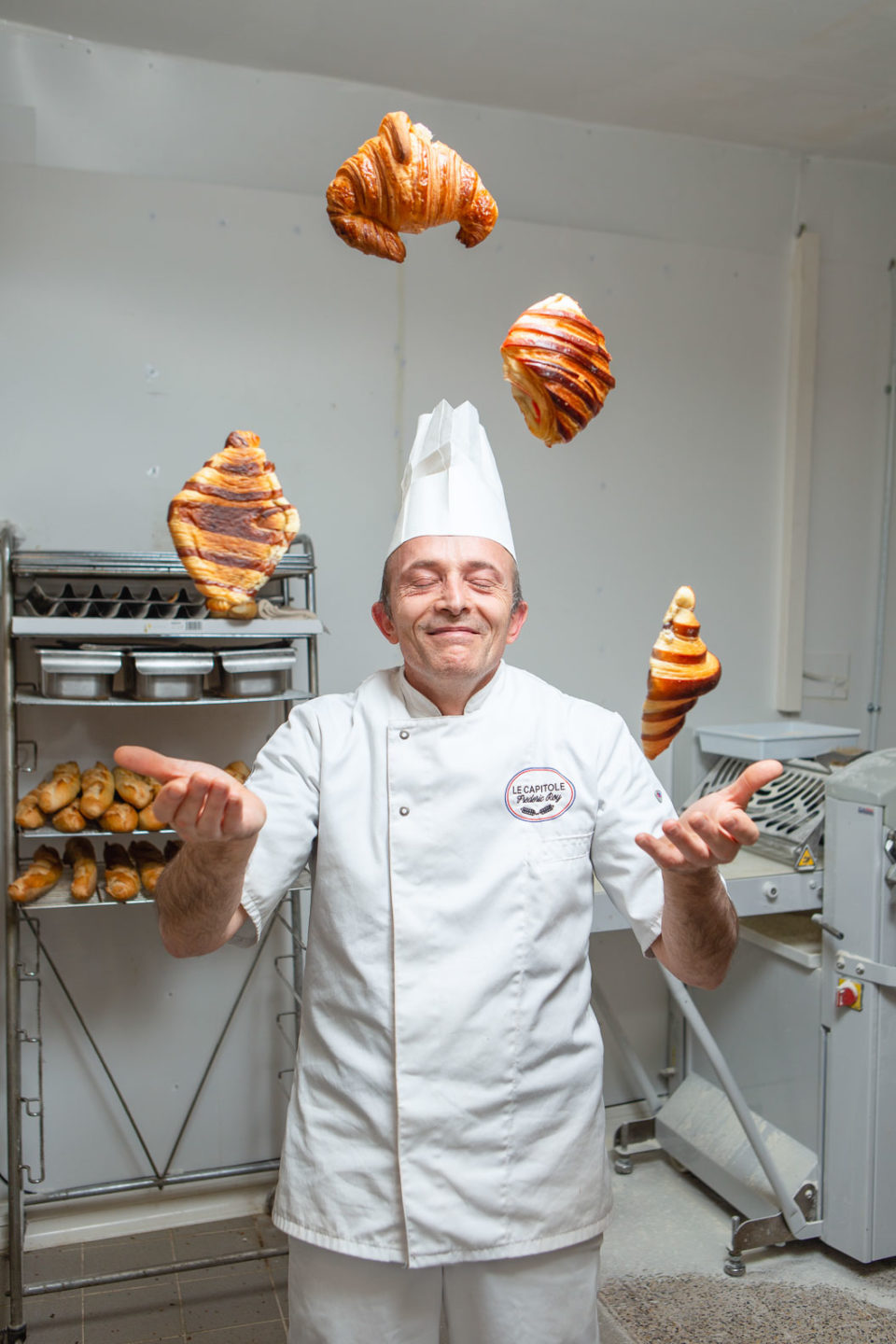
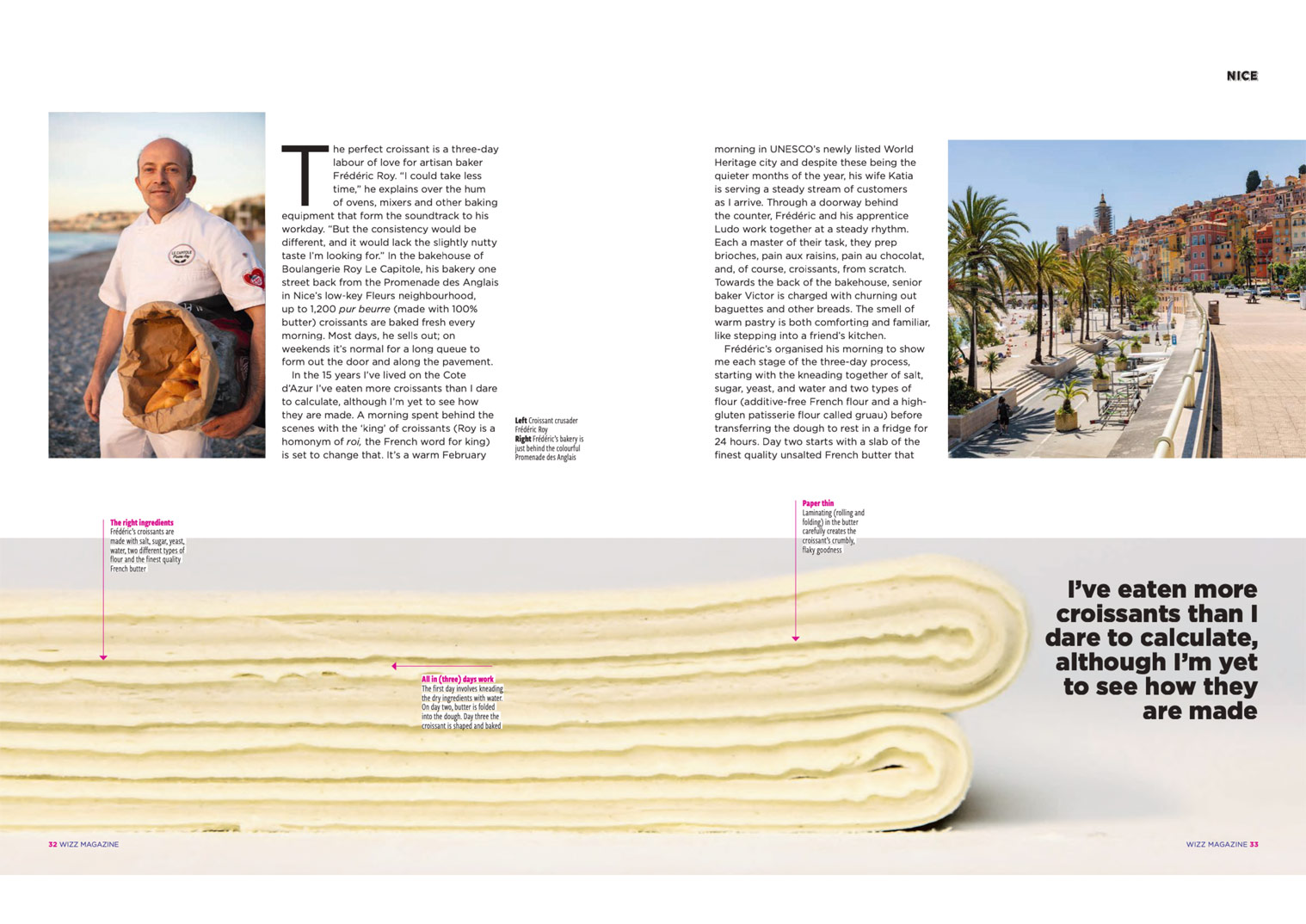
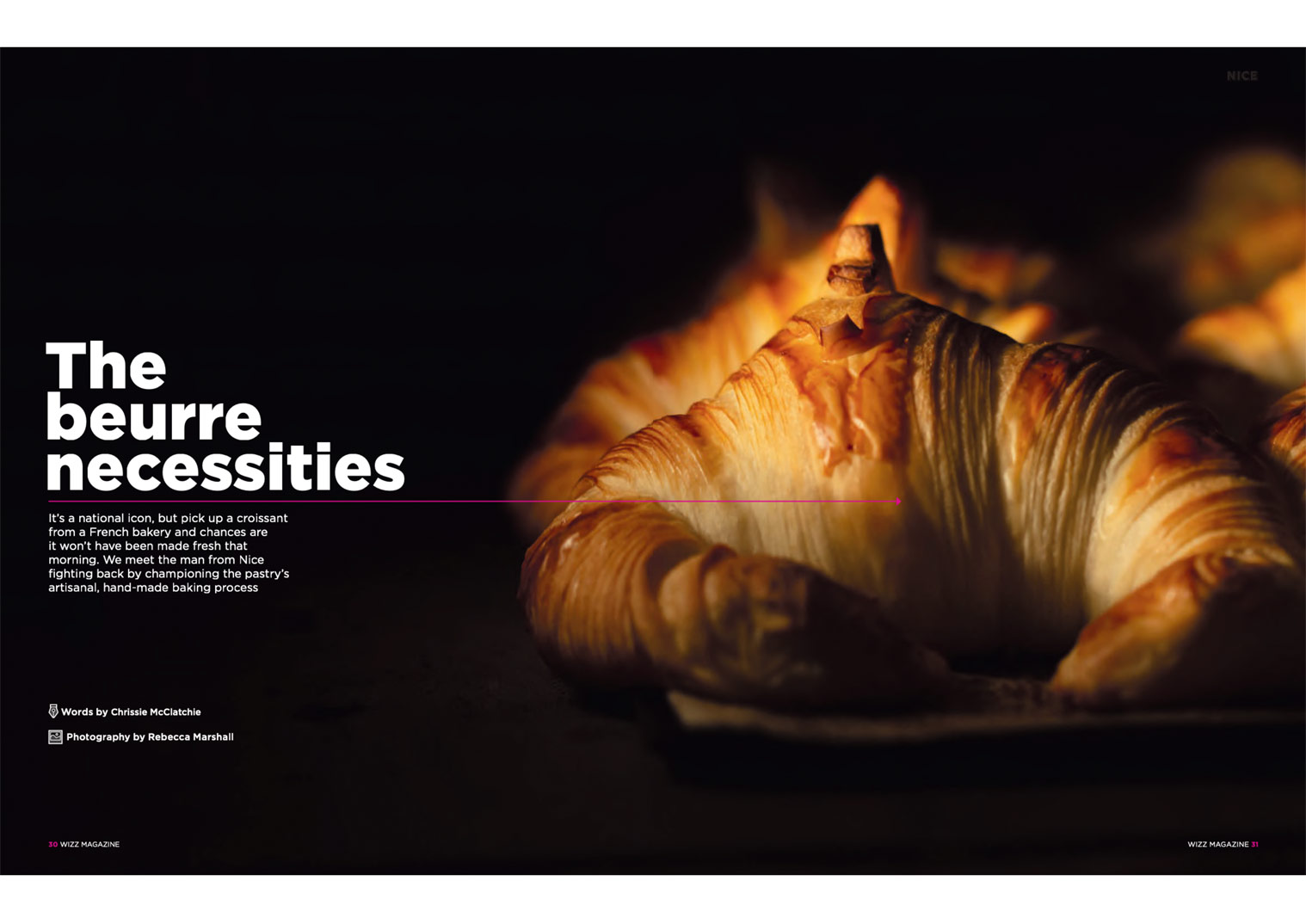
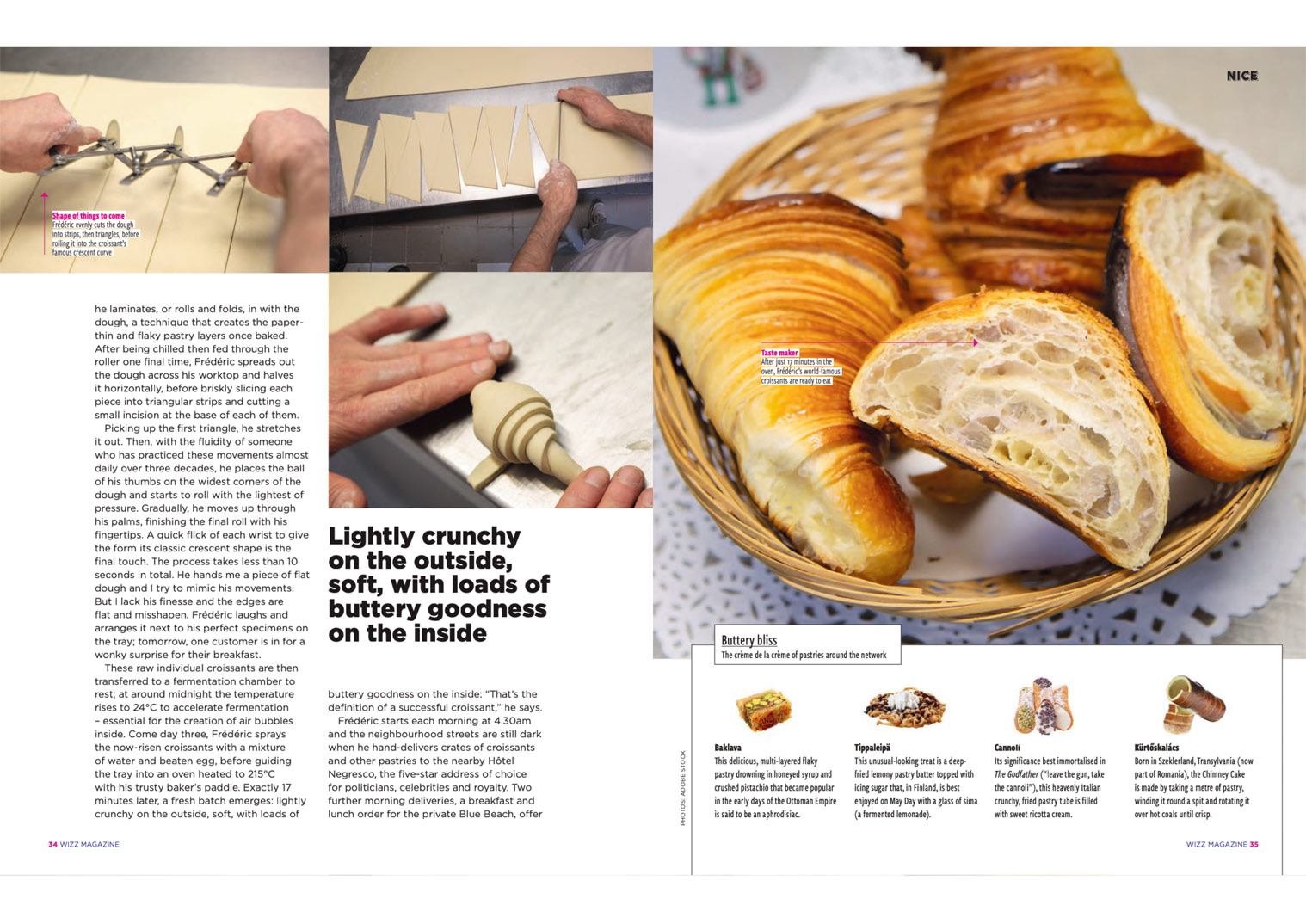
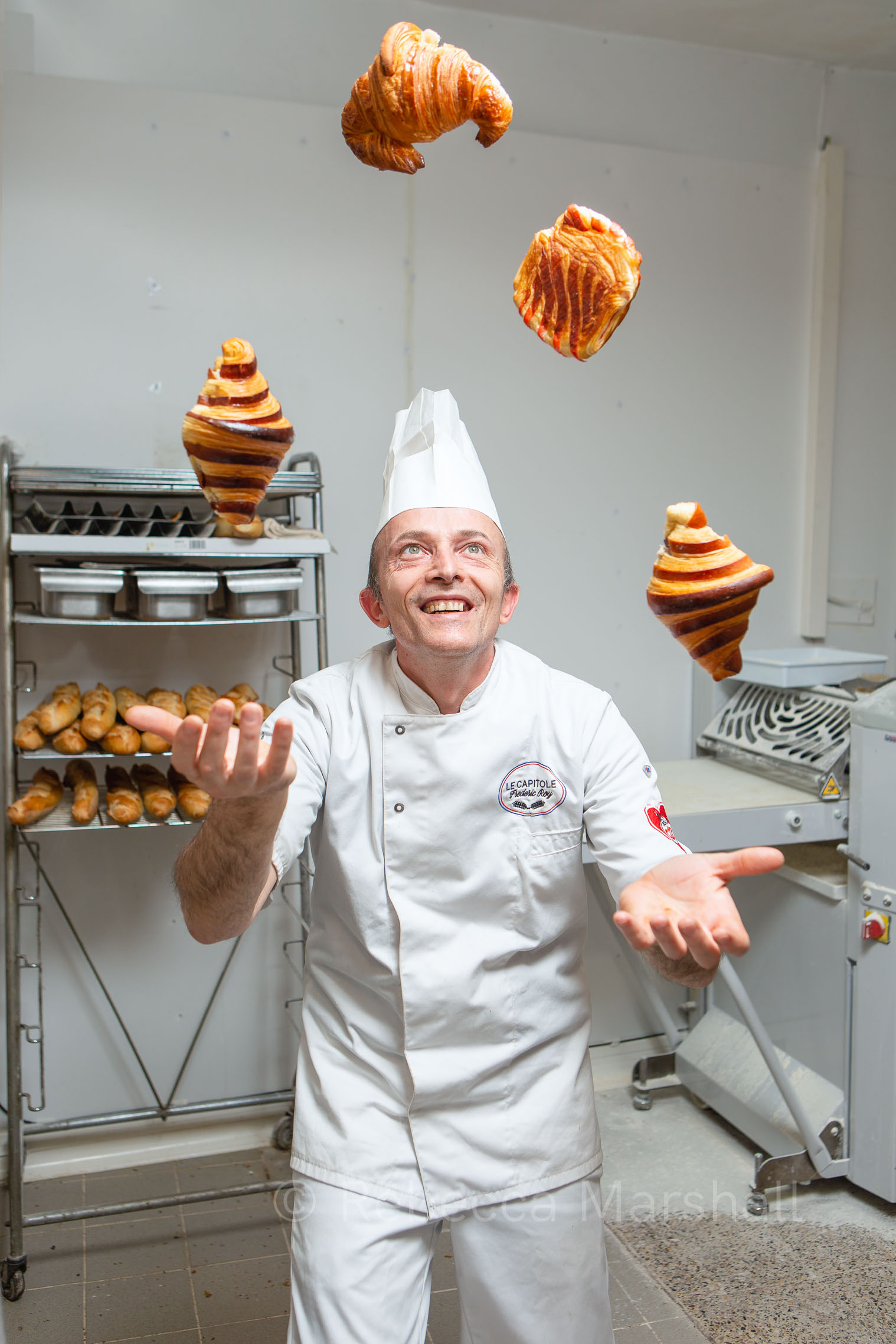
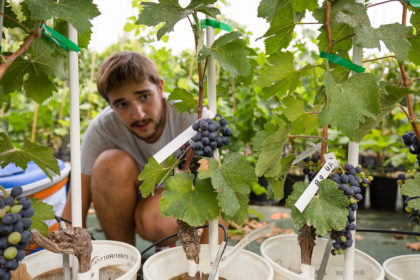
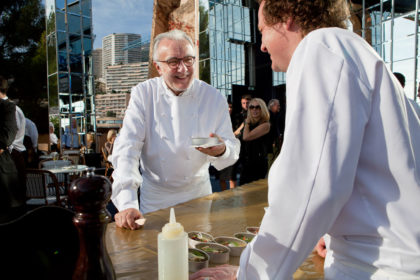
michel preslier
Apr 26, 2022 at 9:55 am
miam miam!!en as tu ramené des croissants?
Rebecca Marshall
Apr 26, 2022 at 11:53 am
Il n’y en avait plus a la fin de mon reportage 🙁